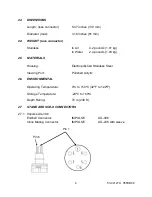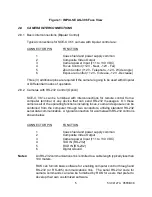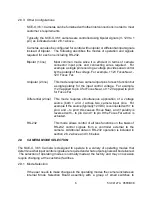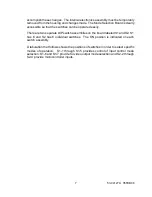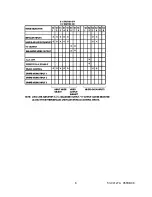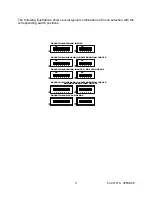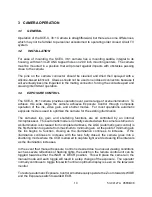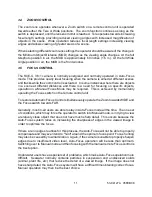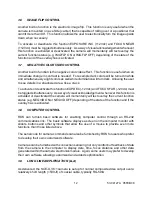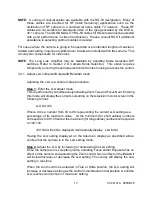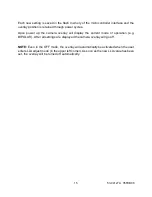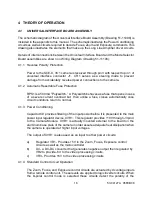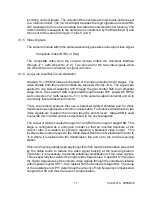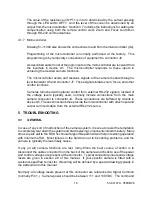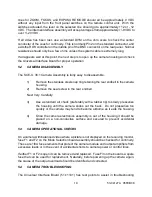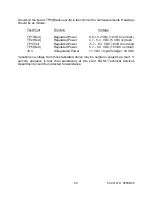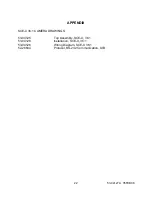
53-04127A 05FEB08
18
The value of the resistance in OPT1 is in turn determined by the current passing
through the LED within OPT1. And the level of this current is determined by an
output from the microcontroller. Section 3.7 includes the instructions for setting the
compensation using bo
th the remote control unit’s Zoom and Focus controls or
through RS-232 communications.
4.1.7 Microcontroller
Drawing 51-11098 also shows the connections to and from the microcontroller (U2).
Programming of the microcontroller is normally performed at the factory. This
programming is by temporary connections of equipment to connector J2.
As described earlier most of the logic inputs to the microcontroller are received from
the inverters in device U1. The microcontroller responds to these inputs in
achieving the desired camera functions.
The microcontroller sends and receives signals to the camera module through a
level translator U5 and connector J7. These signals initiate zoom, focus, and other
control functions.
Cameras furnished with optional control from external RS-232 signals, instead of
the voltage levels typically used, normally include connections from the main
camera connector to connector J4. These connections are buffered by circuits in
device U5. These connections thus provide the microcontroller with direct input and
output communication from the external RS-232 source.
5 TROUBLESHOOTING
5.1
GENERAL
In case of any sort of malfunction of the camera system, it is wise to resist the temptation
to completely tear down the system and start replacing components indiscriminately. Many
times a quick call to the ROS Technical Support Department will help in restoring operation
with minimum effort. Most failures in the field turn out to be cabling problems, and the
camera is typically the least likely cause.
If any (or all) camera functions are lost, many times the best course of action is to
disconnect the cable connector from the back of the camera and check to see if the power
and control voltages are present at the connector. Typical connector pinouts and voltage
levels are given in section 2.8 of this manual. If your specific camera is fitted with a
customer-specified connector, this wiring will be defined by a special drawing typically in
the addendum to this manual.
Normally, all voltage levels present at this connector are referenced to Signal Common
(normally Pin 1.) Camera power should be b11 and +30VDC. The command

